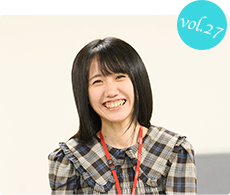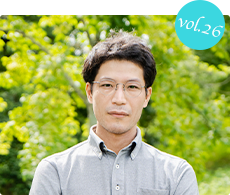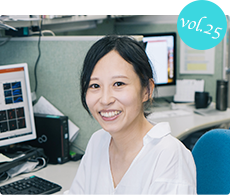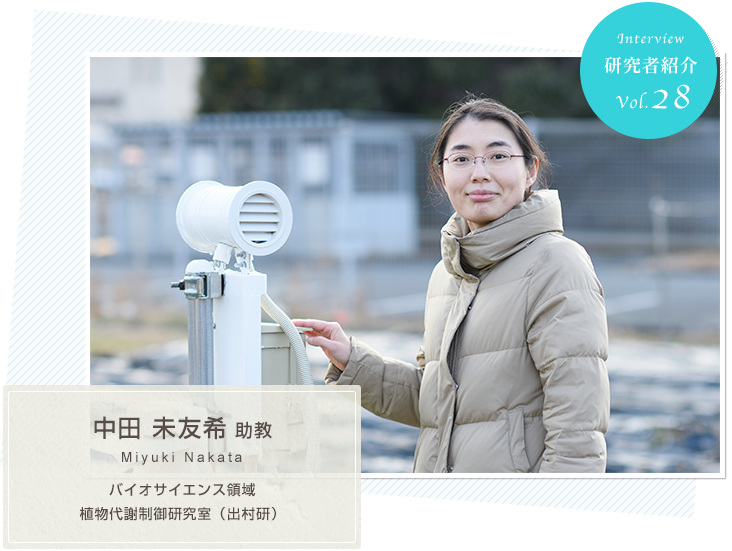
![]()
She received her Ph.D. in March 2012 from the Graduate School of Science, Kyoto University.From 2012 to 2019, she was a research specialist at the National Institute for Basic Biology, a postdoctoral fellow at Rikkyo University, and a research fellow at the National Institute of Advanced Industrial Science and Technology (AIST), where she was involved in research on genes related to plant shape formation and bioresource. She has been in his current position since April 2019.
Why did you become a researcher?
I always liked studying math and science, but I had no idea that I wanted to be a researcher. However, I had the magazine "Newton" at home and the world of research in science and mathematics was familiar to me. I was not interested in practical science, and I liked the process of understanding what I did not understand through trial and error, so I went to the Faculty of Science at the university.
At the university, my friends invited me to join a mushroom collecting club, and on weekends we went to the mountains, where I learned the names of various plants and mushrooms from the older students, and we studied them together in a picture book. This experience made me aware that there are many plants around us with different shapes and ways of living. However, I had no idea that something as seemingly obscure as form and lifestyle could be the subject of scientific research.
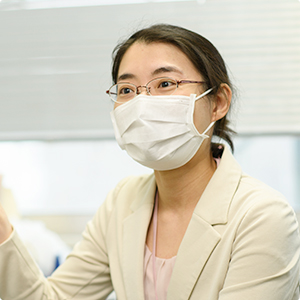
I think the main impetus to become a researcher came from a class taught by Prof. Kiyotaka Okada, who was a professor at Kyoto University at the time. I was shocked to learn that the mechanisms that produce the various shapes of plants had already been the subject of scientific research, and that it was possible to understand these mechanisms logically by studying genes. I was particularly interested in the mechanism that makes leaves flat. There are differences between the front and back of a leaf, such as the fenestra and spongy tissue, the number of hairs and pores, and so on. These differences are caused by different combinations of genes working together. The genes that make the front side of the leaf and the genes that make the back side of the leaf suppress each other's activity to determine and maintain the location of the front and back sides. I wondered how the difference between the front and the back was related to the flattening of the leaves. So after graduation, I joined Dr. Okada's laboratory to work on this research topic. I moved to the National Institute for Basic Biology (NIBB) when Dr. Okada became the director of NIBB, but I continued to work on this topic until I received my Ph.D. and was able to elucidate the gene and part of the mechanism that links the difference between the front and back surfaces to the flattening of leaves.
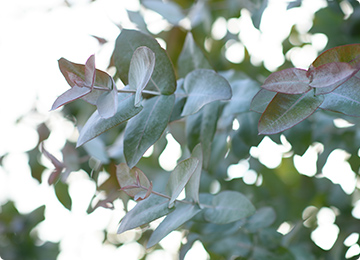
After that, I worked as a postdoctoral fellow at Rikkyo University for three years, and although my research topic changed to roots, my research was similar to that in the Okada lab in that I studied genes responsible for plant morphology. At the National Institute of Advanced Industrial Science and Technology (AIST), the topic changed completely, and I spent three years doing basic research on improving plant cell walls to increase the production of bioresources. In this project, I learned how rewarding it is to be involved in research that leads to the benefit of society.
Since my arrival at NAIST, I have been involved in interdisciplinary research on the mechanical role of plant cell walls in plant morphology and lifestyle. Before coming to NAIST, I used Arabidopsis thaliana, an herbaceous plant used as a model plant worldwide, as my experimental material, but at NAIST, I have started to work with a variety of plant species, including legumes and tree eucalypts. While exchanging ideas with researchers from architecture and physics at other universities, I am engaged in daily research to understand the diverse forms and lifestyles of plants and to contribute the results of my research to society.
Daily schedule
In the morning, I am in charge of housekeeping and childcare, and I feed my child breakfast before going to work; after arriving between 9:30 and 10:00 a.m., I work until about 5:00 to 6:00 p.m. It takes about 15 minutes by car to get to work. The commute to work takes about 15 minutes. When I get home, I often take turns taking care of the children, bathing them, playing with them, and putting them to bed. My husband, who is self-employed, finds it quite difficult to take care of the children while doing housework during the day and finally doing his own thing when the housework is done at night, but he does it well and I am able to do my research with peace of mind. I appreciate it very much.
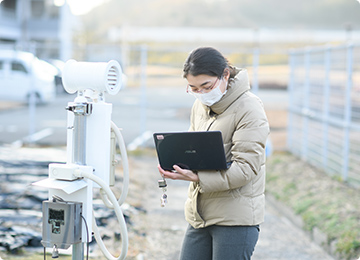
At present, I have two students under my supervision. I am very grateful that Dr. Demura considers my workload because I have a small child. Maybe it is because we are a graduate university, but many of the students are very enthusiastic about their research, which is very helpful. I have study sessions with the students I supervise, where we read literature related to our research topics, and I feel that there is no complete separation between teaching and research, as I am learning and relearning as I teach.
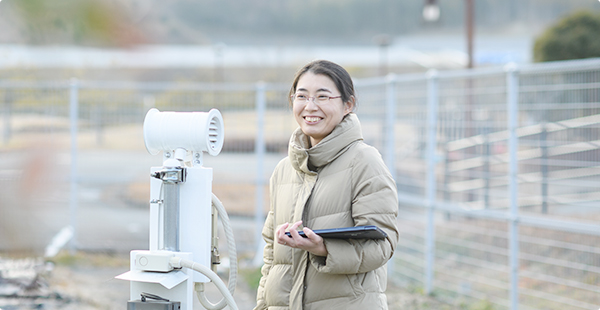
Research Environment and Challenges at NAIST
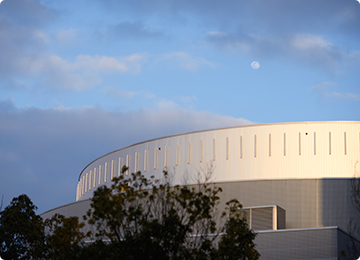
Regarding the research environment, in addition to the research equipment in the laboratory, there are many common devices in the field of biosciences, and we also have a greenhouse for plant cultivation, so there are few problems in terms of facilities. However, information exchange and administrative procedures are relatively often done only by print or e-mail, so if they could be systematized with some kind of groupware, it would reduce the administrative burden even more and allow more time for research.
Recently, we had a sitter come to our on-campus daycare center, Sentan, to take advantage of the babysitter subsidy. The nursery is well equipped with safety measures and plenty of toys, and I was grateful to have a safe place on campus to leave my child. The basic fee for using a babysitter was not too expensive, thanks in part to the subsidy, but it took time to arrange a sitter because there were no sitters near the university, and the transportation cost was quite high because the sitter came from far away. I hope this will be improved in the future.
(February 2022)

-
2022.3 updated
Division of Information Science
-
2021.8 updated
Data Science Center
-
2021.8 updated
Division of Biological Science






